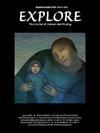Therapeutic evaluation of Munzij regimen and Nusqa-e-Majoosi in the management of Irq al-Nasa (Radicular pain): A case series
IF 2.2
4区 医学
Q3 INTEGRATIVE & COMPLEMENTARY MEDICINE
引用次数: 0
Abstract
Background
Radicular pain, characterized by radiating neuropathic pain in the lower extremities, often arises due to inflammation or compression of the sciatic nerve. Despite advancements in conventional medicine, many patients experience incomplete relief or adverse effects, prompting interest in alternative therapies. This case series evaluates the efficacy of Unani treatment, focusing on the Munzij regimen (concoction) therapy followed by Nusqa e Majoosi (Unani formulation).
Methods
Three cases of diagnosed radicular pain were treated with Unani drugs—the Munzij regimen (concoction) followed by Nusqa e Majoosi. The primary outcome measures included improvements in pain intensity (VAS), functional mobility (SLRT), and quality of life (RMDQ).
Results
All three patients showed notable improvement in symptoms. VAS scores reduced from 8/10 to 2/10, 8/10 to 4/10, and 7/10 to 2/10, indicating pain relief. SLRT angles improved in all cases, and RMDQ scores showed more than a 50 % reduction, reflecting better mobility and daily function.
Conclusion
Unani treatment using the Munzij regimen and Nusqa e Majoosi demonstrated effective symptom relief in radicular pain. Larger studies with comparative designs are required for further validation and potential integration into mainstream healthcare.
Munzij方案和Nusqa-e-Majoosi治疗Irq al-Nasa(神经根性疼痛)的疗效评价:一个病例系列
神经根痛,以下肢放射性神经性疼痛为特征,通常是由于坐骨神经的炎症或压迫引起的。尽管传统医学取得了进步,但许多患者经历了不完全缓解或不良反应,这促使人们对替代疗法产生了兴趣。本病例系列评估了Unani治疗的疗效,重点是Munzij方案(调和)治疗,然后是Nusqa e Majoosi (Unani配方)。方法对3例确诊为神经根性疼痛的患者,采用Unani药物- Munzij方案(合剂)治疗,并辅以Nusqa e Majoosi治疗。主要结局指标包括疼痛强度(VAS)、功能活动能力(SLRT)和生活质量(RMDQ)的改善。结果3例患者症状均有明显改善。VAS评分从8/10降至2/10、8/10降至4/10、7/10降至2/10,表明疼痛缓解。所有病例的SLRT角度都有所改善,RMDQ评分降低了50%以上,反映了更好的活动能力和日常功能。结论采用Munzij方案联合Nusqa e Majoosi治疗对神经根性疼痛有明显的缓解作用。需要更大规模的比较设计研究来进一步验证和潜在地整合到主流医疗保健中。
本文章由计算机程序翻译,如有差异,请以英文原文为准。
求助全文
约1分钟内获得全文
求助全文
来源期刊

Explore-The Journal of Science and Healing
医学-全科医学与补充医学
CiteScore
3.00
自引率
8.30%
发文量
179
审稿时长
25 days
期刊介绍:
EXPLORE: The Journal of Science & Healing addresses the scientific principles behind, and applications of, evidence-based healing practices from a wide variety of sources, including conventional, alternative, and cross-cultural medicine. It is an interdisciplinary journal that explores the healing arts, consciousness, spirituality, eco-environmental issues, and basic science as all these fields relate to health.
 求助内容:
求助内容: 应助结果提醒方式:
应助结果提醒方式:


